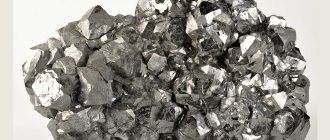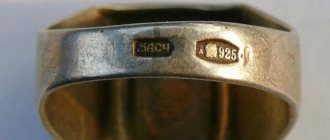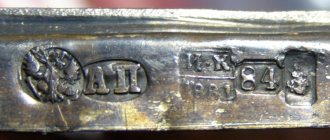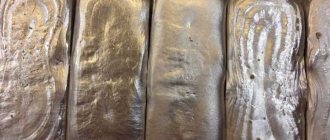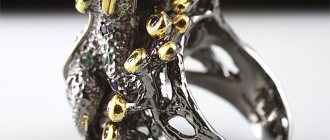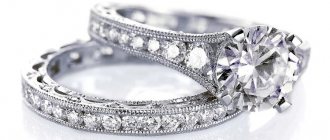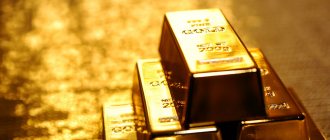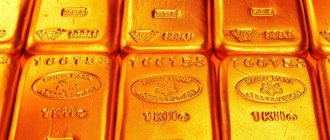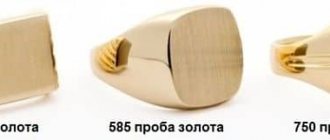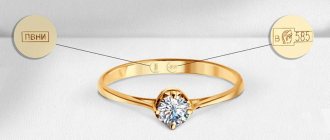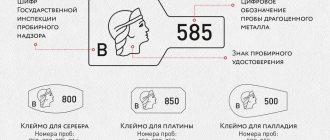September 16, 2021
Fans of precious metals, at least once in their lives, were seriously interested in what kind of silver is used in earrings, rings, chains, bracelets and other jewelry. Like gold, it uses alloys that increase strength and protect against damage. But it’s not just 925-carat metal that has a recognizable matte sheen – today there are several classifications that determine the high cost and unique appearance of a product.
Now you will find out what type of silver has proven itself best in precious production, how the composition of specific alloys differs, and how to determine their quality.
What standard should silver be? Why is classification needed?
Those masters of fine craft who compare jewelry standards with exact fundamental science are right. It was the strict requirements for the composition of jewelry that made them jewelry, but behind every detail there is centuries-old improvement.
What is silver fineness in the usual metric system of measures? First of all, this is the percentage of pure natural composition with so-called ligatures. The latter provide durability and slightly strengthen the naturally soft composition. Secondly, every workshop or large plant has the right to make changes for more efficient alloying. The most popular impurity is copper, but besides it there is nickel, zinc, etc.
A buyer inexperienced with the topic will reasonably ask: “Why then spoil the pure composition if there are ready-made nuggets in nature? They don’t need super strength, we wear them for beauty.” The answer here is obvious - metal without alloys even looks very different from the finished product. A non-professional is unlikely to distinguish a silver “blank” from a piece of stainless steel or tin - it is dull, uneven in texture, and it would be a stretch to call it attractive.
As in the case of gold, silver samples are a production necessity. Even a slight reduction in the mass fraction helps give the metal its signature look, giving truly limitless possibilities for further processing in the jeweler's workshop.
What is the best standard of silver?
One of the main laws of Mother Nature is that there is no such thing as absolute purity, especially when it comes to precious ore. In the case of silver, if the highest category is taken to be 1000 units, the proportion of natural impurities within the nugget ranges between 0.1% and 1% foreign matter. Thus, the best is the highest 999 standard of silver, but it is virtually impossible to obtain it without the need for laboratory refining.
Is this composition used in jewelry? Yes, but under strictly limited conditions, because its natural softness does not allow “load-bearing” elements to be smelted from it. Most often, the highest standard is used as solder for intricate openwork patterns in wide rings or earrings. Some brands put a branded logo stamp on the 999 “drop”.
Interesting fact: The famous chemical experiment of the “silver mirror” reaction from school demonstrates another amazing property of pure metal. It conveys reflection as accurately as possible, but only with perfect polishing and unpolluted air, which in the modern world outside the walls of a chemistry classroom is extremely difficult to achieve.
TOP 5 ways to clean silver at home: tips for caring for the metal
Even the most popular products (sterling) require proper care, as they can darken due to the impurities they contain:
- professional products (Aladdin, Millennium): solutions and pastes are developed specifically for the careful care of demanding items, they are applied to contaminated areas or completely immersed in the solution (depending on the preparation), after which they are carefully polished;
- soda and foil: prepare a solution based on 1 liter of water and 100 g of soda, boil, put foil on the bottom, put the contaminated item on top, remove it after 1 minute, wash it;
- toothpaste: prepare a gel children's variety, since it damages silver objects less, you need to rub those areas where stains have appeared, using a lint-free rag;
- ammonia solutions: prepare an aqueous solution (1:1), place the contaminated item in a container, close it, shake until it is clean, but caution should be exercised, since sterling does not tolerate ammonia well, as a result the jewelry may lose its shine (although it was weak to begin with), the tarnishing will be obvious;
- soap solution: the mildest method, considered quite effective, is to first dissolve the detergent in water, then soak the item or rub the item that has turned black with a rag containing a soap solution.
What is the lowest standard of silver?
Until now, jewelry workshops are arguing about what constitutes the worst quality of a silver alloy, and at what percentage we should talk about the value of the raw material. In Russia there is a concept of the so-called silver-containing composition, where a range of 60-75% of pure metal is allowed. The Soviet Union was more loyal to factories - 875 was considered the most popular, and everything lower was automatically used for the production of cutlery and commemorative medals.
Today's craftsmen have not yet decided where costume jewelry ends and the field of jewelry begins. The cheap segment still refers to 720-750 samples; any percentage up to 92.5% purity will go to silverware. European countries and some Asian brands generally label 650, which is illiquid in our country, as a “precious” metal for an appropriate price.
What tests are used on silver? Where to look for a stamp on jewelry?
According to the current Russian law, all precious products containing more than 80% silver in their specific weight are required to undergo examination by the Assay Commission and receive a company mark indicating a three-digit digital combination. It is placed in different ways, but in most cases in such a way as not to spoil the aesthetics of the product:
- Rings (regardless of style) - on the inside;
- Earrings (classic model) - on the earrings of an English castle;
- Studs - right on the stud itself or the reverse of the base;
- A chain around the neck or a chain bracelet - along the link closest to the clasp or on an additional flat element equal or slightly smaller in width.
- Designer and miniature jewelry of non-standard shapes are also required to be marked - they are stamped without any special conditions.
The most common silver standard in our country is 925, that is, containing 92.5% of the precious metal. In addition to the digital designation, the stamp bears the logo of the Assay Commission - a silhouette of a woman’s head in a kokoshnik, turned to the right. Both images should be clearly visible on the surface, without abrasions or uneven lines - if you see poor-quality engraving, you may have a fake or a factory defect.
Large brands, in addition to the hallmark, put the assay code (one capital letter) and the brand name of the product - usually of a similar size next to it. It contains encoded information, for example, the product article in the factory catalog, production date, etc. Jewelry with a precious stone may also contain additional symbols adopted by a specific factory. All other data is printed on the tag.
Products produced in the USSR are practically no different from modern ones in terms of mandatory labeling. The only difference was the logo, which was a traditional five-pointed star with a hammer and sickle located inside.
Fakes
Unfortunately, objects made of lunar alloy are counterfeited no less often than gold ones . Many buyers consider the presence of a purity mark on an item to be a sufficient basis for trust, which is what scammers take advantage of.
Fake samples
In the manufacture of fakes, especially antiques, fake stamps are often used. Of course, only a professional armed with special equipment can identify a fake.
However, before purchasing an antique item, you should take the trouble to study the specifics of the branding in order to suspect a fake even at the stage of examining the product.
Often, dishonest sellers use the method of removing the mark from a real, but small item and attaching it to a large fake. Sometimes, upon inspection, you can see the soldering points along the contour of the mark.
Attention! Another common method of deception is applying a non-existent sample, for example, 825.
Is it possible to independently determine the purity of an alloy?
The easiest way to check the authenticity of a metal is to try magnetizing it.
Silver is not magnetic, which, however, will not be a reliable way to identify a fake, since there are inexpensive alloys that do not interact with a magnet.
Another household method to determine the authenticity of a piece of jewelry is to put it in a glass of hot water for a few seconds. Silver has high thermal conductivity, so the item should heat up instantly. If this does not happen, then the product is made of a cheap alloy.
Marking of silver jewelry in different countries
As you know, the sampling system was adopted in the territory of the former USSR as GOST and is not subject to challenge when the question concerns authenticity. In Europe and the USA, the standard is to measure the purity of a jewelry alloy in carats, but the situation is even more interesting with antique items. In pre-revolutionary Russia there was an old sample standard - the spool, which according to modern calculations is equal to 4.26 grams with an error of foreign impurities.
By combining three different systems, we get a universal comparison table:
| Silver standard (Russia) | Spool (antique measure) | Karat (Europe and USA) |
| 800 | 77 | 19 |
| 830 | 80 | 20 |
| 875 | 84 | 21 |
| 925 | 88 | 22 |
| 960 | 92 | 23 |
Interestingly, the Russian aristocracy was not very fond of silver items above 84 spools. Firstly, smelting pure metal was very expensive, and they tried to send it strictly for jewelry miniatures. Secondly, the analogue of the current 875 standard turned out to be less demanding in terms of hygiene, so vases, plates and other utensils were often made from it.
You can also distinguish antique silver from a fake using a hallmark. Instead of the logo of the Assay Commission, pre-revolutionary items were stamped with the coat of arms of the province in which the workshop was located or, less commonly, the initials of the jeweler himself with a facsimile.
The cost of 1 gram of pure silver: how the price is fixed
Price changes occur daily. However, one of the values is fixed, and this happens twice a day. The price of silver on the Russian market depends not only on the Central Bank of the Russian Federation. The price set by the main international exchange in London also has an impact. The cost of fixing is the main guideline for market participants.
Formula and results for calculating the cost of the corresponding sample
You can find out the price of silver without going to reputable sources. To do this you will need the cost of 1 g of pure metal. This number is multiplied by the value corresponding to the Ag content in the alloy, examples for different samples:
- 800: 65.56*0.8=52.45 rub.;
- 830: 65.56*0.83=54.42 rub.;
- 875: 65.56*0.875=57.34 rub.;
- 925: 65.56*0.925=60.65 rub.;
- 960: 65.56*0.96=62.94 rub.
The cost at Sberbank and others may differ from the Central Bank rate. This is due not only to the composition of the metal, but also to the organization’s policies.
Ring 985 sterling silver
Factors influencing consumer value
The cost of the highest standard metal silver and alloys based on it depends on several factors. The determining factor is:
- cost of raw materials;
- Exchange Rates;
- the cost of currencies and precious metals of the Central Banks of other countries;
- the total amount of raw materials not only in the Russian Federation, but throughout the world;
- degree of demand for metal.
According to experts, the development of existing deposits will be completed in 2 decades, then there will be a sharp jump in the growth of Ag prices.
What standard is silverware?
Silver cutlery was once considered a luxury item - only wealthy city dwellers could afford a set of precious metal for 12 people, and they used it exclusively on major holidays in order to impress guests. However, with the development of stainless steel utensils, everyday practicality has won - there is no longer a need to organize cleaning days, and the durability of a steel fork or spoon is commensurately higher.
The development of technology also brought the other side of the “coin” - skillful imitations began to be sold under the guise of silver or a silver-containing alloy. It is sometimes difficult to identify them even in the laboratory, especially when the surface is coated with rhodium for greater shine. However, a conscientious manufacturer always marks the product with a letter mark:
- MN (cupronickel) – copper + nickel with shares of manganese and iron;
- MNC (nickel silver) – zinc + copper + nickel;
- AL (aluminum);
- NZh or STAINLESS (stainless steel).
Directly cutlery silver produced in Russia must be stamped with a metric hallmark - from 875 or higher. It is this composition that provides the flexibility, scratch resistance and strength necessary for practical use. The higher the decorative component, the purer the metal required for fine work and finishing.
Important: The famous antibacterial effect of silverware is achieved only when the spoon or other utensil contains 91% or more pure argentum. That is, to disinfect water in a glass, you will need a jewelry-quality product.
Gold-plated and technical silver - what's the difference?
Gilding is a compromise and budget option for using expensive metal in jewelry. It is applied in a thin layer on a silver base, as was done in the first half of the 19th century, but today there is an international quality classification:
- Gold Plated (GP) is the same electroplating method that many people remember from their school physics course. Quite simple in mass production, but has a number of disadvantages. The coating layer rarely exceeds 1-2 microns, which makes the metal vulnerable to any reactions on the body. Detected by a simple temperature test.
- Gold Filled (GF) – so-called high temperature rolling. The precious layer is much thicker - around 10-12 microns. The product is no longer afraid of long-term contact with human skin and subsequent oxidation of the surface, but everything is also easily determined by special equipment or a chemical reaction.
- Gold Soldered (GS) is the most expensive option, where the silver substrate is practically indistinguishable even under the influence of laboratory reagents. The thickness of the gold plating is up to 17 microns and higher, which puts the jewelry on a par with elite ones.
Gilding comes in three silver standards - 875, 916 and 925. Until recently, according to Russian laws, such products did not need to be stamped at all, but now the situation has changed. If the mass fraction of pure metal is more than 80%, manufacturers try to indicate the quality category with at least a two-letter designation - GF, GS or GP.
Technical silver is a separate category that has nothing to do with jewelry, despite the fact that exact sciences require the purest 999 standard with a minimum error of impurities. It is used in such serious industries as:
- Electronics;
- Medicine and prosthetics;
- Aviation and space construction;
- Energy;
- Radio engineering, etc.
You can buy industrial silver only in specialized raw materials stores; Russian laws do not impose restrictions, although in a number of countries retail sales are completely prohibited. For jewelers, such metal is not of particular value - much more effort and resources are spent on refining it than purchasing ready-made ingots.
Types, shades and wide applications of sample 925
If the properties of 925 gold or silver are considered, you can determine what material the product is made from by its external characteristics. So, Au is a yellow precious metal. More often there are decorations in different shades of yellow and red. There is green, blue, black gold and other types. But the silver is grey. After adding additives it turns white. Less commonly, yellowness, pink, red or red tint appears. Such a variety of colors as jewelry containing Au does not exist among silver products.
Directions for using precious metals stamped with 925 silver:
- cash;
- decorations;
- dishes;
- household items, interior, decor;
- accessories;
- religious products;
- coating of contact parts of mechanisms, radio components, in this case a technical alloy is used, the Ag content in it can be different, including the ratio used, like that of the alloy 92.5%.
Despite its high value, sterling is not used in the production of bullion. Only purified Argentum 999 is suitable for this purpose. This doesn't make 925 good or bad. It simply does not meet the requirements for bank precious metals.
Sterling Silver Jewelry
